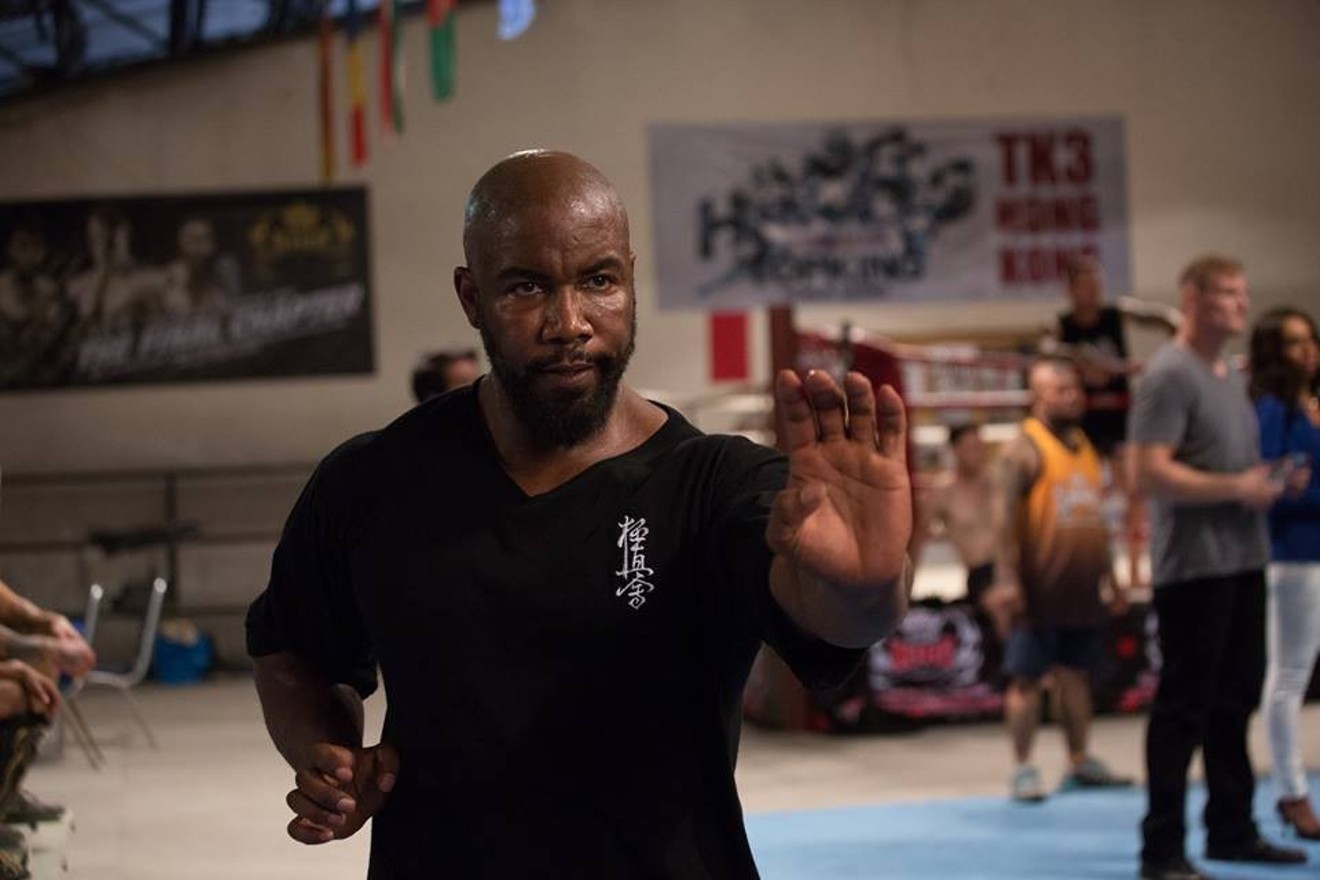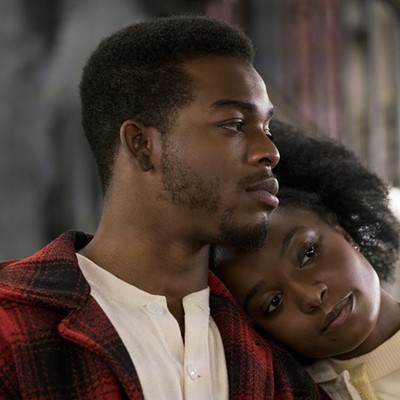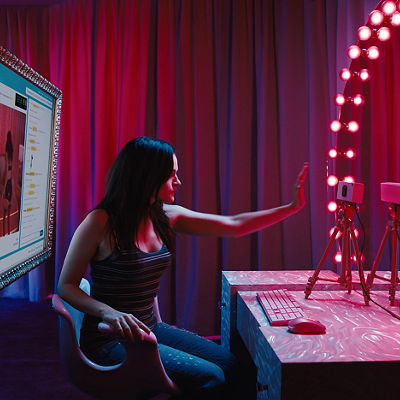In the '80s and '90s, there were action movies. They starred muscly guys like Arnold Schwarzenegger or Sylvester Stallone, or martial artists from Jean-Claude Van Damme to Cynthia Rothrock, or actors who were dedicated to the physical demands of the genre, like Bruce Willis or Wesley Snipes. They mostly told simple stories of crime, revenge or athletic triumph, carefully constructed to showcase a series of choreographed fights, stunts, shoot-outs and chases. They were as internationally relatable an art form as comic books or Michael Jackson. When the Terminator sped away from the T-1000's exploding truck, or when John McClane jumped off of Nakatomi Plaza with a fire hose tied sloppily around his waist, these were universal moments of cinematic exhilaration.
Things changed. Fast editing and wobbly camerawork became standard, and show-stopping sequences of mayhem were replaced with disorienting blurs. For more than a decade now, the craft of depicting bodies in motion onscreen has been forced into hiding in direct-to-video movies like Blood and Bone (2009) and Ninja: Shadow of a Tear (2013).
The dawn of this post-action age can be traced largely to Paul Greengrass’ The Bourne Supremacy and its handheld, quasi-documentary aesthetic. His imitators employed the so-called "shakycam" style more haphazardly than he did, and, after a nine-year absence from the series, he beat them at their own game with last July's Jason Bourne. Its fist fights and car chases are largely impressionistic smears, a quantum of solace for anyone disturbed by the relatively coherent framing of Tony Gilroy's The Bourne Legacy (2012). A traditionally shot one-punch knockout was a centerpiece of the trailers but presented from a different, obstructed angle in the movie itself, so that you don't see most of the opponent or his fall. Some of the most exciting images — dashcam and helicopter shots of a motorcycle chase — are presented as government surveillance feeds. Ironically, the "real" footage is much easier to follow than the "realistic" style Greengrass prefers.
The traditional actionfests we once flocked to — including the ones that, like Bourne, prioritize verisimilitude over awesomeness — are now a niche. John Rambo has been replaced by Captain America. Fortunately, Captain America: Civil War featured much clearer battles than its predecessor, Captain America: The Winter Soldier. John Wick helmers David Leitch and Chad Stahelski, as well as Fast and Furious series stunt coordinator Spiro Razatos, numbered among Civil War’s second-unit directors, and they've come up with complex battles between many different characters with their own gimmicky abilities. The much more violent Deadpool also provided superhuman melees with its often slow-motion cataloging of acrobatic ninja moves and mid-air bullet-firings — and it deserves credit for giving MMA icon Gina Carano one of her few solid roles post-Haywire.
But these very entertaining films don't give us the human-scale thrills of traditional action. Swinging Spider-Man and punching Colossus are as much about special-effects wizardry as human physicality. The same could be said for many of the best sequences in the underrated The Legend of Tarzan, the silly X-Men: Apocalypse or the jumbled Batman v Superman (though there’s complex fight choreography in the latter's long-take dream-sequence fight).
Those movies have budgets too big to settle for plain old fighting and chasing, while the smaller productions can't afford as much as they'd like. Hardcore Henry and The Brothers Grimsby got around that by introducing first-person action, seen from a fighter’s point of view, a momentarily amusing gimmick that denies us the two most important elements of screen fighting: cool moves and cool poses. I got more thrills out of crime dramas like Triple 9 and Hell or High Water, but their getaways and shoot-outs are brief. The few traditional action movies on the big screen in 2016 did little to fill that hole. London Has Fallen has all of the mean-spirited jingoism of a Cannon Chuck Norris movie without any of the fun.
Recent months have at least offered more choices, the B-action equivalent of Oscar season. Mechanic: Resurrection brought us the return of the Jason Statham vehicle, unfortunately with close-up, wobbly fights like its predecessor. We rarely see more than part of Statham's torso and head when he's in combat. He even head-butts someone while everything above his chin is out of frame. When Jessica Alba is swimming underwater, the camera steadily ogles her every curve like it's doing a 3D scan. I wish they had the same admiration for the fight choreography.
Jack Reacher: Never Go Back offered similarly passable-formula-action results on a bigger budget, with a sizable drop in action clarity from its impeccably framed predecessor.
For years now, the best action has been in direct-to-video or video-on-demand/extremely limited theatrical release. Writer/director/star Michael Jai White's Never Back Down: No Surrender is a heartfelt mixed-martial-arts competition movie with a compelling protagonist and excellent fights. The DTV Hard Target 2 is a showcase vehicle for the skills of British martial artist Scott Adkins, who mostly stood silently next to the leads in theatrical releases Criminal and Doctor Strange.
In VOD/very limited theatrical release we had Blood Father, starring Mel Gibson as an ex-con protecting his long-missing daughter from a drug cartel. It's an excellent movie with simple, old-school action, but not a huge amount of it. For that we had to go to Kickboxer: Vengeance, a remake of Cannon's Jean-Claude Van Damme classic. Though some of the editing is quick for my tastes, this might be the most action-delivering American film of 2016. True to its title it depicts literally hundreds of kicks, the vast majority of them shot with the kicker's entire body in frame.
Choreographer Larnell Stovall (Universal Soldier: Day of Reckoning) finds plenty of personality in the fights, such as the arrogance of Van Damme (in his new role as the mentor) not removing his hat or sunglasses to fight. The hero Kurt Sloane (Lebanese-Canadian stuntman Alain Moussi) often finds himself fighting much bigger opponents like Dave Bautista and Cain Velasquez. He tries to do the type of cool-looking flying kicks and punches that are usually finishing moves in movies, but they just catch him or swat him down like a volleyball.
The pendulum may be swinging back. Just a year ago, the best movie of any type, Mad Max: Fury Road, demolished every expectation of vehicular action. The year before that, John Wick and The Raid 2 gleefully pushed the limits of ultraviolent martial arts and gunplay. These are high-water marks that 2016 couldn’t approach, with one exception: the Hong Kong/Thailand co-production Kill Zone 2, which had a limited American release with little fanfare. Tony Jaa and Wu Jing play a prison security guard and undercover cop who get mixed up in a wild organ-harvesting conspiracy. An emotional story of morality, sacrifice and poetic coincidence is woven through sequences that are jaw-dropping for their filmmaking technique as much as for their complex stuntwork.
The renaissance is real, no matter what Jason Bourne has to say about it.
Support Us
Houston's independent source of
local news and culture
account
- Welcome,
Insider - Login
- My Account
- My Newsletters
- Contribute
- Contact Us
- Sign out

Michael Jai White in Never Back Down: No Surrender
Courtesy of Sony Pictures
[
{
"name": "Related Stories / Support Us Combo",
"component": "11591218",
"insertPoint": "4",
"requiredCountToDisplay": "4"
},{
"name": "Air - Billboard - Inline Content",
"component": "11591214",
"insertPoint": "2/3",
"requiredCountToDisplay": "7"
},{
"name": "R1 - Beta - Mobile Only",
"component": "12287027",
"insertPoint": "8",
"requiredCountToDisplay": "8"
},{
"name": "Air - MediumRectangle - Inline Content - Mobile Display Size 2",
"component": "11591215",
"insertPoint": "12",
"requiredCountToDisplay": "12"
},{
"name": "Air - MediumRectangle - Inline Content - Mobile Display Size 2",
"component": "11591215",
"insertPoint": "4th",
"startingPoint": "16",
"requiredCountToDisplay": "12"
}
,{
"name": "RevContent - In Article",
"component": "12527128",
"insertPoint": "3/5",
"requiredCountToDisplay": "5"
}
]
KEEP THE HOUSTON PRESS FREE...
Since we started the Houston Press, it has been defined as the free, independent voice of Houston, and we'd like to keep it that way. With local media under siege, it's more important than ever for us to rally support behind funding our local journalism. You can help by participating in our "I Support" program, allowing us to keep offering readers access to our incisive coverage of local news, food and culture with no paywalls.
Vern
Contact:
Vern
Trending Film
- International Film Festival 2000
- It’s Sadly Kind of Perfect That New Season of GLOW Is Stolen by Marc Maron
- Made in Houston
-
Sponsored Content From: [%sponsoredBy%]
[%title%]

Don't Miss Out
SIGN UP for the latest
news, free stuff and more!
Become a member to support the independent voice of Houston
and help keep the future of the Houston Press FREE
Use of this website constitutes acceptance of our
terms of use,
our cookies policy, and our
privacy policy
The Houston Press may earn a portion of sales from products & services purchased through links on our site from our
affiliate partners.
©2024
Houston Press, LP. All rights reserved.





